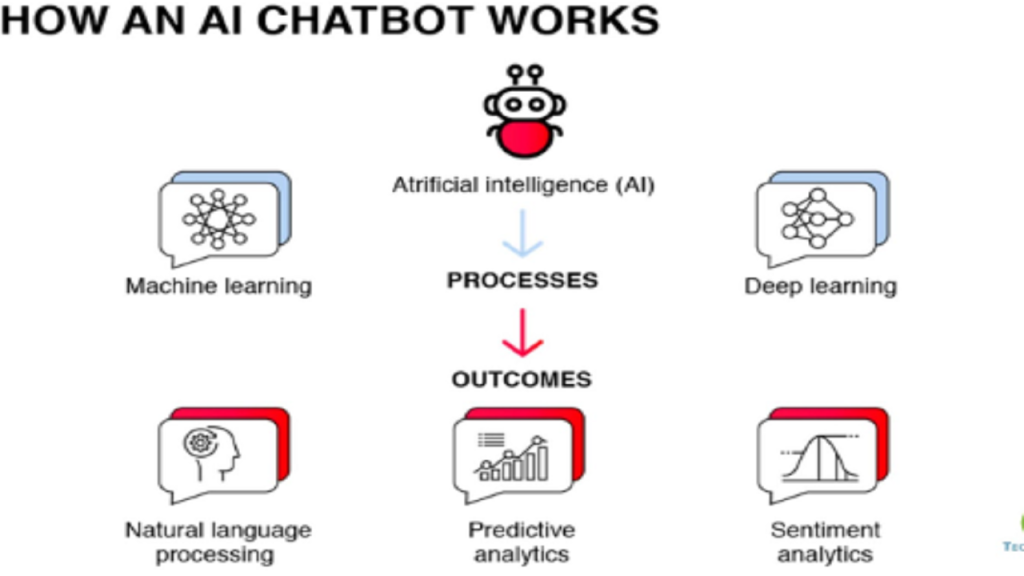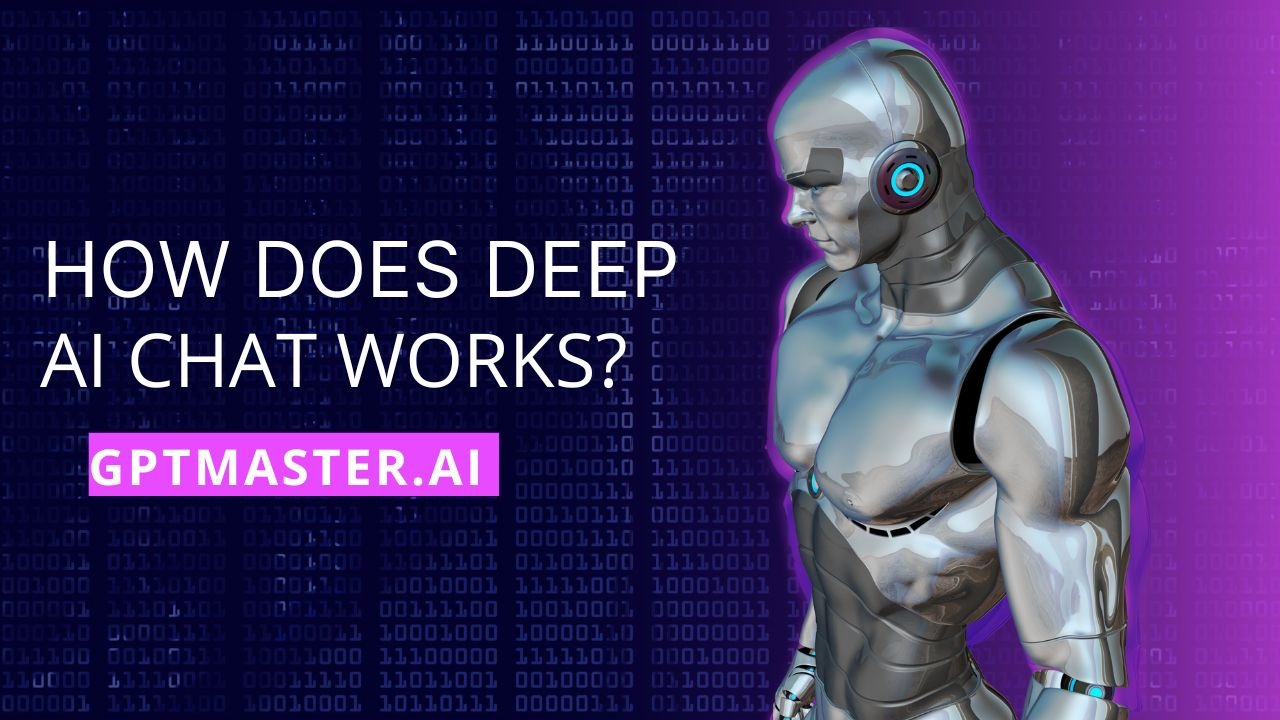Introduction
In the realm of artificial intelligence (AI), chatbots have become indispensable tools for engaging and assisting users. These intelligent systems go beyond simplistic programmed responses, employing advanced algorithms such as natural language processing (NLP), machine learning, and deep learning. This article delves into the intricate workings of deep AI chat, shedding light on the key algorithms, training approaches, and capabilities that empower these virtual conversationalists.
SEE MORE : How ChatGPT Code Interpreter Plugin Works?
Key Algorithms at Play
1. Pattern Matching
At the heart of AI chatbots lies the pattern matching algorithm. It involves matching user inputs with predefined responses. While this may seem straightforward, the intricacies emerge when dealing with varied and nuanced language expressions. Pattern matching is the initial step in deciphering user intent and ensuring the chatbot responds appropriately.
2. Naive Bayes Classification
To comprehend the intent behind user input, AI chatbots leverage Naive Bayes classification. This algorithm categorizes text into groups, aiding in the understanding of the user’s intention. It excels at discerning context and provides the necessary foundation for generating coherent responses.
3. Sequence-to-Sequence Models
The conversation takes center stage with sequence-to-sequence models. These algorithms translate input to output while retaining the underlying meaning. In the context of deep AI chat, they play a pivotal role in maintaining the flow and coherence of conversations.
4. Recurrent Neural Networks (RNN)
Deep AI chat relies on Recurrent Neural Networks (RNN) to process sequential data, such as conversations. This allows the chatbot to grasp the flow of the discussion, remember past interactions, and contribute meaningfully to ongoing dialogues.
5. Long Short-Term Memory (LSTM)
A specific type of RNN, Long Short-Term Memory (LSTM), excels at remembering context. This is crucial in chat scenarios where maintaining the context of the conversation enhances the chatbot’s ability to provide relevant and meaningful responses.
6. Transformers
Powering models like GPT-3 and ChatGPT, transformers represent a revolutionary architecture. They enable the chatbot to process and generate responses by considering the entire context of the conversation, offering a more comprehensive understanding of user queries.
Training Approaches
The prowess of deep AI chat emerges not only from advanced algorithms but also from diverse training approaches that enhance the chatbot’s learning capabilities.
1. Supervised Learning
In supervised learning, chatbots are trained on labeled conversation datasets. This method equips them with the ability to understand and respond to specific queries accurately. It forms the foundational training stage, imparting essential knowledge to the AI system.
2. Reinforcement Learning
Fine-tuning takes a prominent role in deep AI chat, with reinforcement learning providing the mechanism for improvement. By soliciting feedback from human interactions, chatbots can adapt and enhance their responses over time, becoming more adept at understanding and addressing user needs.
MUST READ : Quantum AI Investment – Open AI Master
3. Unsupervised Pre-training
Exposing models to vast amounts of unlabeled text data through unsupervised pre-training is another key approach. This step allows chatbots to develop a broader understanding of language nuances and context, contributing to their overall conversational proficiency.
Capabilities of Deep AI Chat

1. Understanding Natural Language
Deep AI chat excels in understanding natural language questions and commands, transcending the limitations of rigid pre-programmed responses. The integration of advanced algorithms enables these chatbots to interpret user input with a high degree of accuracy.
2. Context Maintenance and Memory
One of the distinguishing features of deep AI chat is its ability to maintain context and memory throughout conversations. This ensures a more coherent and personalized interaction, as the chatbot can refer back to previous exchanges and build upon them.
3. Generating Relevant and Coherent Responses
The amalgamation of algorithms like Naive Bayes classification, sequence-to-sequence models, and transformers empowers deep AI chat to generate responses that are not only relevant but also coherent. This elevates the quality of interactions, making the chatbot a valuable conversational partner.
4. Task Completion
Beyond conversations, deep AI chat exhibits the capability to complete a myriad of tasks. Whether it’s writing, translation, coding, or other specialized domains, these chatbots can leverage their learning to perform tasks with a proficiency that mirrors human-like competence.
5. Learning and Improvement
A hallmark of deep AI chat is its capacity to learn and improve from human feedback. Through reinforcement learning, these chatbots adapt to user preferences and correct errors, continually refining their capabilities to provide a more intuitive and responsive experience.
ChatGPT: A Deep Learning Marvel
In the landscape of AI chat, ChatGPT stands out for its deep learning approach and the incorporation of reinforcement learning. Developed by OpenAI, ChatGPT exemplifies the amalgamation of advanced algorithms and diverse training approaches, making it a powerful and versatile conversational agent.
Conclusion
Deep AI chat represents a convergence of cutting-edge algorithms and innovative training methodologies. From pattern matching to transformers, and from supervised learning to reinforcement learning, the multifaceted approach equips chatbots with the ability to understand, engage, and improve over time. As technology advances, the realm of deep AI chat continues to evolve, promising more natural, coherent, and context-aware conversations with virtual entities like ChatGPT leading the way.

